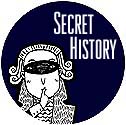 |  |

Recalling Knoxville's Championship Season
by Jack Neely
Today, exasperated fans are known to mutter, "Knoxville's just not a baseball town." It would have seemed an insupportably odd thing to say, 120 years ago.
It's not that there was nothing else to do. Knoxville offered plenty other pastimes in the summer of 1878. There were shooting competitions, horse races, operettas at Staub's Opera House. Phonographs were a technological marvel new to town.
One of the most memorable athletic events that summer took place not on a baseball diamond but in an East Cumberland Avenue blacksmith's shop. Charles Ziege was a German immigrant and, like most blacksmiths, a strong man. He announced that, on a bet, he could drink a glass of beer and then, as you watched, eat the glass. As he chewed, a witness reported, Ziege's powerful jaws grinding the glass sounded "like a bay window smashed to smithereens."
He'd do it for cash or trade. The first taker gave Ziege a barrel of nails just to witness the feat.
Nobody said Ziege wasn't a very impressive man, but Knoxville baseball drew much bigger crowds. By the summer of 1878, old-timers were already fond of bragging about the "old days" of Knoxville ball, claiming that Knoxville had introduced baseball to the South and recalling "when the Holstons brought laurels to the town and gave it a standing in sporting matters." Knoxville baseball started with open clubs like the war-veteran Knoxville Holstons, but by the 1870s, it was the University ball club that was considered state champion, unbeatable. They called themselves the Riverside 9, and by the late 1870s—before UT had anything to do with football, or Volunteers, or the color orange—called themselves the UT Reds.
The name probably reflected the color of their socks but may also have been inspired by the great Cincinnati Red Stockings. Nine years earlier, the Ohio team had become America's first pro baseball team, soon to be contenders in the new National League. After the disgrace of the Louisville club over a gambling scandal in '77, Cincinnati was the nearest big-time pro team—and Knoxville's favorite. Those big-city Reds often came to Knoxville for an exhibition game or two.
Anyway, 1878 turned out to be one of the UT Reds' best springs ever. Closing the season, the UT team scored a 39-10 victory over an industrial club, the Mechanics 9. Clearly on a roll, they didn't want to stop playing just because school was out. But some of the players had to go home to help out on the farm. The solution to the dilemma seemed clear.
One of the better clubs the UT Reds had played in '78 was a noncollegiate Knoxville team. They combined rosters; in the summer of '78, the amalgamation became the Knoxville Reds.
It was an all-star club. The captain was Irish third-baseman Martin Condon. Right-fielder James Rule was a champ slugger. Their pitcher, diminutive Jack Sneed, was said to be the best in amateur baseball; some would claim that he introduced the curve ball to the South. President of the Knoxville Reds was a 27-year-old classics professor named Ebenezer Alexander—18 years before he helped organize the first modern Olympic Games in Athens.
They wore no hats and no gloves but did sport arrogant jerseys, bearing a shield embroidered with a large, royal R.
They claimed to be the best "amateur" team in a region that had no officially professional teams—a 20th-century reporter alleged they were second only to one amateur team in Worcester, Mass.—but just how amateur the Knoxville Reds were is open to question. They played most games for cash prizes derived from ticket sales, usually in the hundreds of dollars—thousands, easily, in today's money. That's not counting the betting on games, sometimes shared with the players, which often dwarfed the purse.
But the Reds, several of whom were from wealthy families, played many of their games for charity; in 1878 the most urgent charity was relief for victims of the yellow fever plague in Memphis. For one Thursday afternoon benefit game, the Knoxville Tribune politely suggested that all employers "permit their employees to attend between the hours of two and six o'clock." Apparently, many bosses complied.
They played the Nashville Lincks, the Chattanooga Roanes, the Atlanta Alerts, the Cleveland Plug-Uglies, teams from Bristol, Va., and Huntsville, Ala. They were said to be unusually small in stature for "Base Ballists," but the Knoxville Reds beat nearly all their opponents. Sometimes they won with only eight players in the field. In one game, the Cleveland Plugs were so exhausted and discouraged by their 22-13 deficit that they surrendered the game in the 8th.
By the end of the 1878 season, the Knoxville Reds were declared statewide champs and, after beating the Bristol and Abingdon teams, unofficial champs of Virginia, as well.
By 1880, the original Reds were splintering into rival teams: the Condons, the Grays, the Babies ("Little But Loud"), the Young Irish Americans, the Swift Feet. (Black Knoxville, of course, had its own champs: the Lone Stars, the Glittering Copy, the Crescents, the Garfields).
The reputation of "the Celebrated Reds" endured—for a while, anyway. It's not surprising that our first fully salaried team, in 1894, chose to call themselves the Knoxville Reds. Those latter-day Knoxville Reds may not have had the gritty arrogance of the Reds of a generation before; but they did launch a number of fine players, including a young catcher from South Knoxville named Bill Meyer.

|